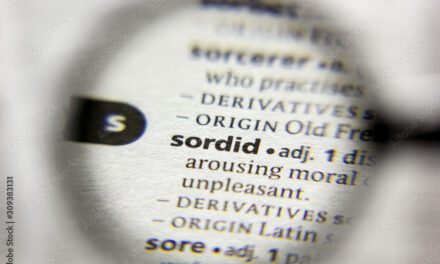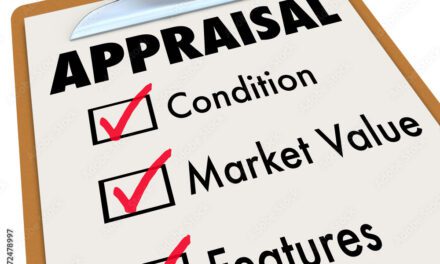The Texas Supreme Court recently decided on a very significant case on legal malpractice. The following is the major theme on the “surface” of that opinion. Elizondo v. Krist, ___ S.W.3d ___ [2013 WL 4608558] (Tex. Aug. 30, 2013)
Some Fundamentals
Virtually all legal malpractice cases require the use of experts. Lawyering is a complex service and lay clients can determine what they regard as the good and the bad, but they cannot really say reliably what reasonable lawyers would do under the circumstances.
General Criteria for Acceptability
The criteria for someone being an expert is that they can be rationally expected to provide reliable testimony. The reliability of testimony can be determined on the basis of all sorts of reasons. Experience in the area is often taken to be a central ground, and many lawyers like to say that identical employment (or something close to it) is not only a good indicator but the best indicator and perhaps the only one.
Of course, this is far from true. Someone who studies something extensively may be just as qualified, or better, than someone who has had the right employment. Many other factors are important. It is impossible to say with certainty the necessary conditions of reliability.
It is doubtful that a lawyer who has studied banking for several weeks to prepare to testify and who has not studied for a longer read no books, and interviewed no bankers would count. The case might be different for a banking lawyer who has never actually been a banker. Professors in business schools and who have Ph. D.s or M.B.A.s in financial management, or something like it, will probably be shoe-ins. The might also be possible for someone knowledgeable about related topics in the general area and who has taken a couple of or several months to actually study relevant matter(s?) in a variety of ways.
It is certainly not the case that the various Daubert tests must be passed. Banking is not a scientific activity, just as law is not. The fundamental precedent for reliability is to be found in Kumho Tire. Reliability and related ideas have probably always been the real standard; even today a good number of lawyers speak, write briefs, and act as if Daubert was the expert witness “Bible.” The surface of precedent certainly looked like that and had to be done, but witnesses in legal malpractice cases, as in many others, could not have performed the scientific tests and/or published in the ways required in scientific journals, as was more or less required in Daubert.
Criteria Applied to Lawyers
The same criteria–reliability–applies to lawyers. Sometimes it is argued that a lawyer cannot “judge” the activities of a non-lawyer. In a slew of–though not all–cases, that would not apply. Some insurance lawyers might be highly qualified to testify about adjustment performance. It is sometimes argued that one lawyer that does not do (precisely?) what another does cannot be a reliable observer and therefore cannot be an appropriate expert. This is nonsense, of course, a lawyer’s experience of inactivity or studies in area A may well be able to “judge” the performance of a lawyer working in area B. Naturally, this is not always true. It is improbable that a lawyer who majored in music and who has worked on musical copyright matters her whole career will be able to work on a patent case concerning complex engineering problems, although might well be able to do a cyber-copyright case, trade secrets case, a defamation case, and many others.
Then again, it must be kept in mind that the standard of care for all lawyering is the same. One who understands quite clearly a hypothetical involving lawyer performance might be just fine, at least in theory. After all, most expert witnessing involves the “if, then” way of thinking. Still, there will be controversies over this last issue every time.
Required Elements of the Expert Testimony
In Texas, said the court, the testimony of an expert witness–including that of a lawyer in a legal malpractice case, must “look like” the following:
- based upon facts,
- not lack “demonstrable” facts and connected reasoning.
- not simply conclusions,
- more than ipse dixit of an acknowledged expert (“Take my word for it, x is true.”),
- be a satisfactory “analytical gap” between the facts and the opinion, and
- be without “fatal gaps.”
This, or a small variant of it, is the law pretty much everywhere.
In this case, the plaintiff (P) was injured in 2005 by an explosion at the BP Amoco Chemical Company plant in Texas City. He worked for a BP contractor, so he could pursue action against BP. Fifteen (15) workers were killed and many more were injured. There were 4000 suits filed. Almost all were settled along the way; only a handful went to trial, and those were settled before the verdict.
Eventually, P’s case was settled after “all” the pretrial jockeying went forward, or so it would appear.
It settled for $50,000.00. P was thrown by the explosion approximately 20 feet up against the porta-potty. He received medical treatment for neck and back injuries, but he returned to work a few days later, and apparently missed no work for any relevant reason. However, he claimed to have suffered a psychological injury. (As the reader may know, in Texas, as in many other states, bodily injury is a sufficient condition for having a cause of action for psychological injury, though not a sufficient condition for actually having such an injury.) Neither his medical nor his psychological expenses were particularly high.
His counsel (Ls) demanded $2M but eventually settled for $50K. P eventually sued Ls; they moved for summary judgment and prevailed on the grounds that the testimony of the expert was insufficient to establish a fact issue. Without a fact issue, the trial court’s granting summary judgment was required.
There was something revolutionary about this case. The Supreme Court clearly held–at least implied–that the so-called “case-within-the-case” doctrine is not always required. It may well not apply to mass tort cases where there are a huge number of settlements, as there were in this case.
P’s appeal, in this case, was about the expert testimony. The court found that there were a number of things wrong, but they were all tied to the same problem.
The expert has to raise by his testimony that there was a fact issue. Roughly speaking, the court held that there is legal malpractice in a lawyer’s settling a case only if it does not fit into the general pattern of settlements. In general, smaller injuries do not get the same size awards as those who have been killed or those who are maimed. Thus, the testimony of the expert must, at the summary judgment stage that P’s injuries were unreasonably distant from the pattern.
Clearly one of the things that are needed is evidence of this pattern. Expert must testify on that, and he cannot do it without relevant evidence being fed to him.
Interestingly, the Court held that it was within the bounds of zealous advocacy, as required by the “ethical rules” governing lawyers, to decline to use what they had because of rules regarding confidentiality.
Oddly enough, P did not contend that their expert needed information about other specific settlements.
P did not claim that the expert would have augmented his opinion if he had such information.
The expert himself said that he was precluded from divulging settlement amounts of which he was aware.
The expert did not indicate in the record that he wanted it to analyze and compared with P’s settlement amount.
P did not ask the court to delay deciding summary judgment until there had been a real attempt to obtain the information. P could have made such a request if he thought it was needed.
If the prose of the court is to be understood, P filed a motion seeking an order to permit the expert witness to examine such material, under a proposed protective order. It looks like opposing counsel did not oppose the motion. And it appears that the expert sought a relevant court order since he was permitted to look at them under the settlement agreements if ordered by a court. These matters appear to have petered out.
There were motions to delay summary judgment to seek relevant evidence, but some pleadings asserted that the information at issue in the summary judgment was not needed. The pleading asserted that all that was needed were copies in which settlement amounts had been redacted.
Ls do not contend in the malpractice case that they needed that information. Ls ask the appellate courts to hold, that the trial court abused its discretion to finally set a time for a summary judgment, and then issue a judgment on that basis. The court rejects the argument.
Ls contended that no different expert opinion was needed because the BP argument in favor of summary judgment was based on a “faulty premise,” namely that the only way to prove damages is by means of the use of the pattern of settlement amounts.
There was a short dissent which will be ignored here. It will probably have no influence on subsequent legal developments.
—MSQ
Several points may be made easily:
First, the expert witness needed settlement amounts and a match-up to injuries. Maybe he would need job categories. (He did not need names or other identity-producing information.) It is difficult to see why Ls would not pursue it. Perhaps it could have been obtained from BP. And we live in the age of e-discovery so it would be simple and inexpensive for BP to provide it. (Of course, the e-discovery rules have yet to be Texas law, but BP knew how to use the federal rules, and a reasonable judge might enter an appropriate order.)
Second, if the opinion is clear, whenever the court says that P did or did not do something, asked, or did not ask for something, the court is referring to Ls. They were in charge of P’s case, not P.

![More on “Suez v. ‘Evergreen’/’Ever Given'[*] & Owner”](http://www.michaelseanquinn.com/wp-content/uploads/2021/06/Ever_Given_container_ship-1024x681-1-440x264.jpg)





Recent Comments